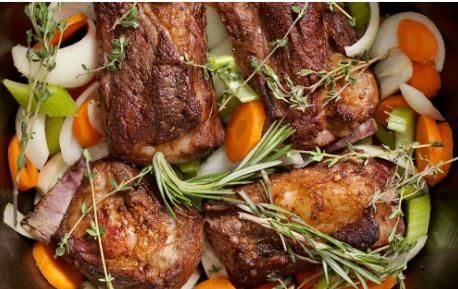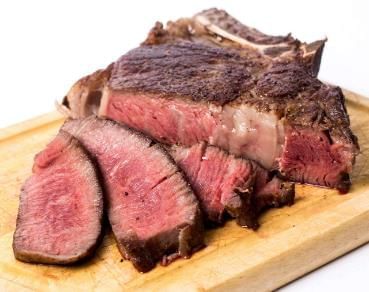Cooking Methods | Food & Nutrition for Year 6 PDF Download
| Table of contents |

|
| Selecting Appropriate Cooking Methods |

|
| Water-Based Cooking Methods |

|
| Dry Heat Cooking Methods |

|
| Fat-Based Cooking Methods |

|
Selecting Appropriate Cooking Methods
Cooking methods can be grouped into three primary categories: water-based, dry heat, and fat-based. Each method impacts food differently, affecting nutrient retention (vitamins and minerals), texture, flavor, and palatability based on the ingredient and technique used.
Water-Based Cooking Methods
Water-based methods include steaming, boiling, simmering, blanching, poaching, and braising.
Steaming
Steaming involves cooking food over boiling water or stock, using the steam’s heat without direct liquid contact. Tools like steamer baskets, pots, or electric steamers are used.
Advantages:
- Retains most nutrients due to no water contact.
- Preserves vibrant color, taste, and texture in vegetables (if not overcooked).
- Gentle method, ideal for delicate foods like fish.
- No fat/oil needed, making it healthy.
- Food cannot burn, though overcooking is possible.
Disadvantages:
- Lacks the enhanced flavor of methods like roasting or grilling.
Boiling
Boiling involves submerging food in boiling water, stock, or milk at high heat, softening tough foods like pasta, rice, hard meats, or certain vegetables.
Advantages:
- No fat/oil required, making it a healthy option.
- Energy-efficient and quick with small volumes of liquid and a lidded pan.
- Food cannot burn, though overcooking is possible.
Disadvantages:
- Lacks additional flavor compared to roasting or grilling.
- Over-boiling can reduce nutrient content, flavor, and color in vegetables and fruits.
- Harsh method, unsuitable for delicate foods.
Simmering
Simmering uses low heat to gently cook food in just-boiling liquid, often for sauces, curries, or soups, enhancing flavor through reduction.
Advantages:
- No fat/oil needed, making it healthy.
- Energy-efficient with small liquid volumes and a lidded pan.
- Food cannot burn, though overcooking is possible.
Disadvantages:
- Over-simmering can reduce flavor and color in vegetables and fruits.
- Long cooking times may lower nutrient content.
- Flavors may leach into cooking liquid, lost unless used in sauces.
Braising
Braising is a slow-cooking method in an oven, using a lidded pot with liquid (water, stock, or wine) and flavorings like herbs or vegetables. Often, larger meat cuts are seared before braising.
Advantages:
- Produces tender, soft foods.
- Retains and enhances flavors.
Disadvantages:
- Significant nutrient loss into the cooking liquid.
- Vegetables may become overly soft, losing color and texture.
 Braising can tenderise meats and root vegetables
Braising can tenderise meats and root vegetables
Blanching
Blanching involves briefly submerging food in boiling water, then quickly cooling it in cold water or ice to halt cooking. It partially cooks food and is used for:
- Removing skins from fruits/vegetables (e.g., tomatoes, peppers).
- Reducing strong flavors (e.g., onions).
- Preparing food for freezing.
Advantages:
- Preserves texture, color, and taste.
- Maintains high nutrient quality.
Disadvantages:
- Does not fully cook food.
Poaching
Poaching uses low heat (around 80°C) to gently cook food in liquid (water, milk, or stock), suitable for eggs, fish, fruits, and vegetables.
Advantages:
- Gentle method, ideal for delicate foods.
- Retains some nutrients.
Disadvantages:
- Not suitable for hard vegetables or tough meats.
- May result in loss of flavor, color, and texture.
Dry Heat Cooking Methods
Dry heat methods include baking, roasting, grilling, and dry frying.
Baking
Baking uses an oven’s radiation and convection to evenly cook foods like cakes, breads, potatoes, or pies.
Advantages:
- Produces tender, soft foods.
- Allows flavor enhancement.
- Creates a crispy exterior and moist interior.
Disadvantages:
- High heat causes vitamin loss.
- Older ovens may cook unevenly and be less efficient.
Roasting
Roasting uses dry oven heat with added fat on the food’s surface, suitable for large meat cuts and vegetables.
Advantages:
- Yields tender, moist foods with a crispy exterior.
- Fat enhances flavor and can be reused (e.g., in gravies).
Disadvantages:
- High heat leads to vitamin loss.
- Vegetables may become overly soft or burnt, losing color and texture.
- Added fat can make it less healthy.
 Large cuts of meat can be roasted to give a moist inside and flavoursome crispy outside
Large cuts of meat can be roasted to give a moist inside and flavoursome crispy outside
Grilling
Grilling uses high dry heat from above or below, with food on grill bars, allowing fat to drip off. Suitable for vegetables, small meat cuts, meat alternatives, and halloumi cheese.
Advantages:
- Cooks food quickly.
- Adds flavor and creates a crispy exterior.
- Healthier as fat drips away.
Disadvantages:
- High heat causes vitamin loss.
- Food can burn easily, losing color and texture.
- Requires frequent monitoring and turning.
Dry Frying
Dry frying uses a pan without added fat, relying on the food’s natural fats (e.g., in beef steaks, sausages, burgers, mince, nuts, or seeds). Medium heat melts the fats for cooking.
Advantages:
- Creates a crispy exterior.
- Enhances flavor and aroma, especially in nuts and seeds.
- Healthier as no extra fat is added.
Disadvantages:
- High heat causes vitamin loss.
- Food can burn easily, losing color and texture.
- Requires frequent monitoring and turning.
Fat-Based Cooking Methods
Fat-based methods include shallow frying and stir-frying, using added fats during cooking.
Shallow Frying
Shallow frying uses a small to medium amount of heated fat/oil in a pan to cook foods like eggs, burgers, sausages, bacon, fish, or pancakes. Preheating the fat prevents greasiness.
Advantages:
- Creates a crispy exterior.
- Enhances flavor and aroma.
- Quick cooking retains most nutrients.
Disadvantages:
- High fat content can be unhealthy.
- Food can burn easily, losing color and texture.
- Requires frequent monitoring and turning.
Stir-Frying
Stir-frying involves quick cooking on high heat in a wok with minimal fat/oil, suitable for vegetables, tofu, small meat or fish cuts, and noodles.
Advantages:
- Creates a crispy exterior.
- Vegetables retain color and texture.
- Healthier due to minimal fat use.
- Quick cooking minimizes nutrient loss.
Disadvantages:
- Food can burn easily, losing color and texture.
- Requires constant monitoring and stirring.
|
89 docs|6 tests
|
FAQs on Cooking Methods - Food & Nutrition for Year 6
| 1. What are the main differences between water-based, dry heat, and fat-based cooking methods? |  |
| 2. Why is steaming considered a healthier cooking method compared to frying? |  |
| 3. When should I use dry heat cooking methods instead of water-based methods? |  |
| 4. What are some examples of fat-based cooking methods and their benefits? |  |
| 5. How can I choose the right cooking method for different types of food? |  |















